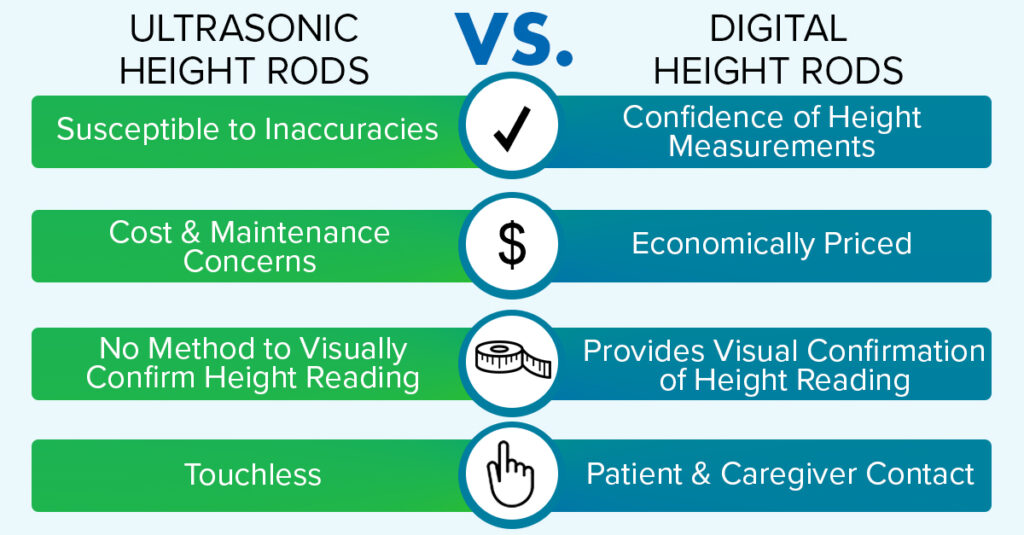
Measuring patient height is an important aspect of an overall health assessment. Healthcare providers have long relied on the traditional mechanical height rod to measure patient height, either attached to a scale or mounted on a wall. In recent years, medical device manufacturers have introduced new height measuring technologies, referred to as Digital and Ultrasonic. Both digital and ultrasonic height rods provide an easier measuring experience than a strictly mechanical version, but they differ in their complexity. Practitioners need a reliable and accurate height measuring device, and when choosing between an Ultrasonic or Digital height rod, there are several factors to consider.
A digital height rod functions much like a mechanical height rod, requiring the practitioner to physically place a headpiece onto the patient. However, digital technology provides the user with a numerical read-out of the height measurement. Practitioners can then also choose to confirm the height measurement using the unit graduations printed along the height rod’s surface. The technology in the digital height rod utilizes physical data readings within the internal mechanics of the height rod, providing tangible data vs. an estimation. Though these digital height rod’s design factors do not provide a simpler way of measuring height or allow for distance between the user and the patient, the design gives the practitioner confidence that the height measurement reading is accurate, and the digital display gives the user a faster way to read the height measurement.
Ultrasonic height rods feature sound wave technology that uses sensors to estimate the height of the patient. This technology is susceptible to miscalculation based on head shape or hair style and can also be affected by environmental factors such as air flow or humidity. There is also no way for the practitioner to visually confirm the height reading as there is no physical height rod to proof against. However, using the ultrasonic height rod does allow for a faster, hands-free measuring experience for the practitioner and provides more physical space for the patient.
Other factors to consider when choosing the best height rod technology for a facility include cost and maintenance. Digital height rods are a more budget friendly choice and often simpler and less expensive to replace if broken. Due to the high-tech components of the ultrasonic height rod, they are understandably more expensive and can be costlier to repair or replace. Each organization has its own workflow and overall patient care goals so decision makers should consider all these factors when evaluating the right height rod for their facility.
 Safe Patient Handling
Safe Patient Handling 